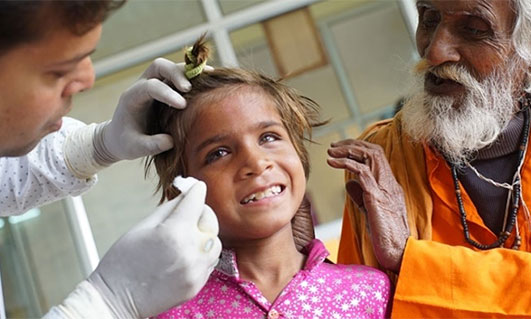
Visually impairments a disease
What is blindness?
Blindness is a visual impairment characterized by the inability to see or a significant loss of vision. It is generally defined as having visual acuity of 20/200 or less in the better eye with the best possible correction, or a visual field of 20 degrees or less. Blindness can be caused by various factors, including eye diseases (such as cataracts, glaucoma, or retinal disorders), genetic conditions, injuries, or systemic diseases (like diabetes). It is important to note that the term “blindness” is often used as a general term to describe a wide range of visual impairments, from complete loss of vision to varying degrees of low vision.

Types of blindness
There are different types and classifications of blindness based on the cause and extent of visual impairment. Here are some common types:
Complete blindness: This refers to the total absence of vision. People who are completely blind cannot perceive light or form any visual images.
Legal blindness: Legal blindness is a term used for individuals who have visual acuity of 20/200 or less in the better eye with the best possible correction, or a visual field of 20 degrees or less. This level of vision loss often qualifies individuals for certain benefits and services.
Low vision: Low vision describes significant visual impairment that cannot be fully corrected with glasses, contact lenses, medication, or surgery. People with low vision may have some residual vision, but it is insufficient to perform daily activities without additional aids or adaptations.
Cortical blindness: Cortical blindness is caused by damage to the visual cortex of the brain. Individuals with cortical blindness may have structurally intact eyes, but their brain is unable to process visual information effectively.
Night blindness: Night blindness, also known as nyctalopia, is a condition where individuals have difficulty seeing in low-light conditions or at night. It can be caused by various factors, such as vitamin A deficiency or certain inherited retinal disorders.
Color blindness: Color blindness, or color vision deficiency, is a condition where individuals have difficulty distinguishing between certain colors. The most common type is red-green color blindness, where individuals have trouble differentiating between shades of red and green.
Visual impairment a disease
Visual impairment itself is not a disease, but rather a condition or disability that affects a person’s vision. It can be caused by various factors, including eye diseases, genetic conditions, injuries, or systemic diseases. Some examples of diseases or conditions that can lead to visual impairment include:
Cataracts: A cataract is a clouding of the lens in the eye, leading to blurry vision and eventual visual impairment if left untreated.
Glaucoma: Glaucoma is a group of eye conditions that damage the optic nerve, resulting in gradual vision loss and potentially blindness.
Macular degeneration: Age-related macular degeneration (AMD) is a progressive condition that affects the central part of the retina (the macula), leading to a loss of central vision.
Retinitis pigmentosa: Retinitis pigmentosa is a group of genetic disorders that cause the breakdown and loss of cells in the retina, resulting in a progressive loss of peripheral vision and, in some cases, central vision.
Diabetic retinopathy: Diabetic retinopathy is a complication of diabetes that affects the blood vessels in the retina, leading to vision loss if not managed properly.
These are just a few examples, and there are many other eye diseases and conditions that can cause visual impairment. It’s important to consult with an eye care professional for proper diagnosis and treatment of any visual impairment.
Treatment for various forms of blindness

The treatment for various forms of blindness depends on the underlying cause and specific condition. Here are some examples of treatments for different types of visual impairment:
Cataracts: Cataracts are typically treated through surgical removal of the cloudy lens and replacement with an artificial intraocular lens (IOL).
Glaucoma: Glaucoma can be managed through various treatments, including medications (eye drops), laser therapy (such as trabeculoplasty or iridotomy), or surgical procedures (like trabeculectomy or implantation of drainage devices) to reduce intraocular pressure and prevent further damage to the optic nerve.
Macular degeneration: Although there is no cure for macular degeneration, certain treatments may help slow its progression. These can include anti-vascular endothelial growth factor (anti-VEGF) injections, laser therapy, and the use of specialized low-vision aids and rehabilitation services to optimize remaining vision.
Diabetic retinopathy: Treatment for diabetic retinopathy may involve laser therapy (photocoagulation) to seal leaking blood vessels, injections of anti-VEGF medications, or, in more advanced cases, vitrectomy surgery to remove blood or scar tissue from the eye.
Retinitis pigmentosa: Currently, there is no known cure for retinitis pigmentosa, but research is ongoing. Treatment options may involve the use of low-vision aids, adaptive technologies, and genetic counseling for individuals and families.
Infections: Infections causing blindness, such as trachoma or certain eye infections, may be treated with appropriate antibiotics or antiviral medications to control the infection and prevent further damage.